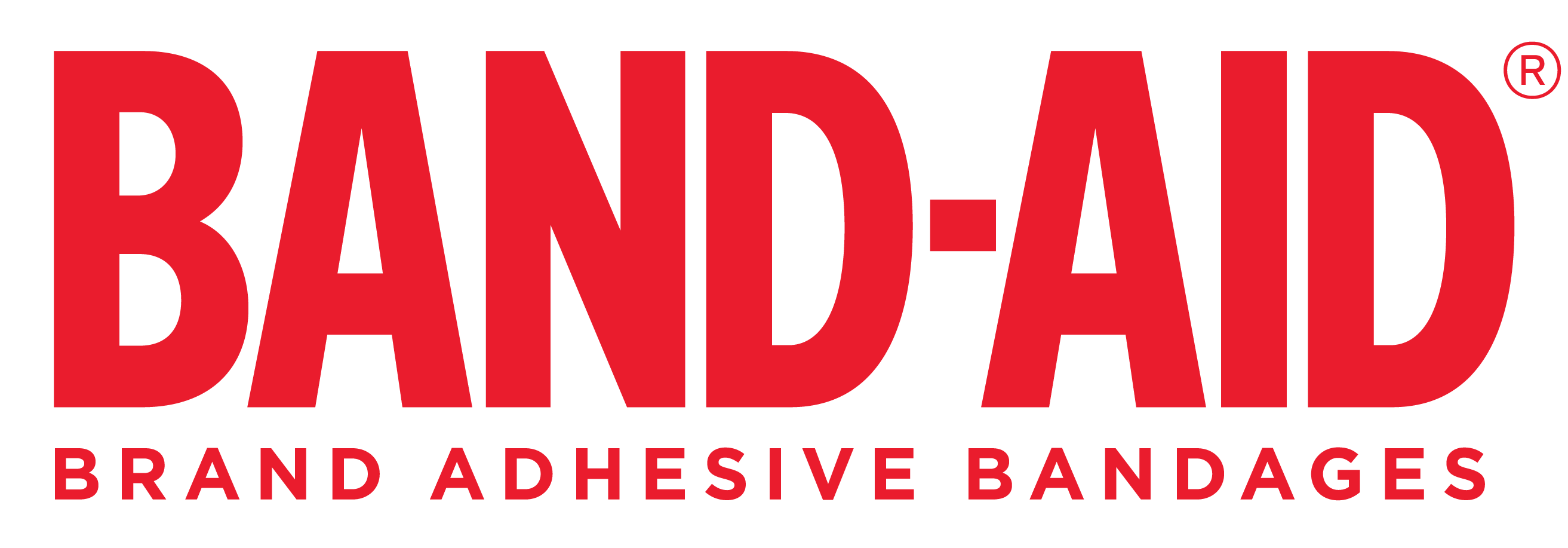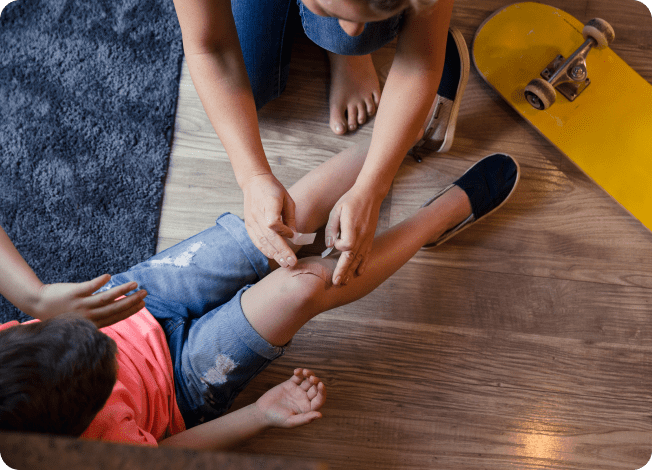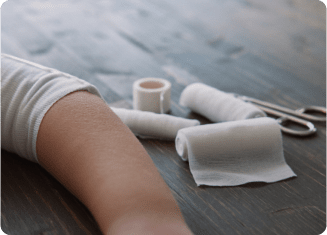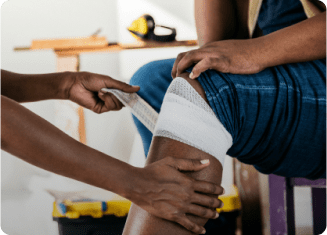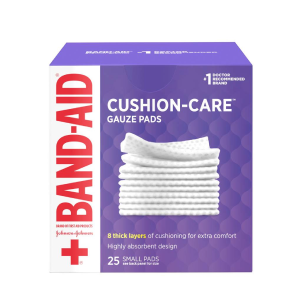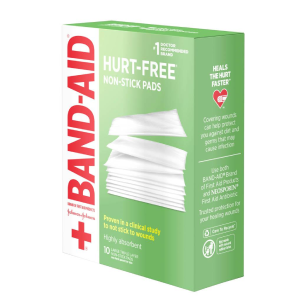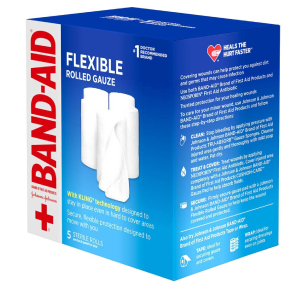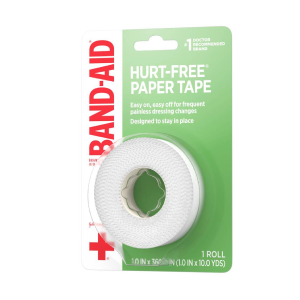- Home
- First Aid Basics
- First Aid Kit
bab_first_aid_kit_checklist_desktop2x.png

FIRST AID BASICS
First Aid Kits: What to Have and What to Know
First aid kits play a vital role in any home, dorm, workplace or school, in case of accidents or injuries.
The good news is that a properly stocked first aid kit should be able to handle many minor cuts and burns or mishaps – whether they involve a scraped knee, bee sting or other issue.
Pre-packed kits are available from BAND-AID® Brand, containing a range of essential items to take care of yourself, loved ones, friends or colleagues after a minor accident. Putting together a DIY first aid kit, meanwhile, allows you to build on this support by including other items, tailor-made to your needs.
Read on to discover what should be in a first aid kit, and how to use one effectively.
Or click here for a downloadable printout of our first aid kit checklist
First Aid Kit Checklist
You should think about including the following first aid supplies when putting together a kit for your home, car or workplace:
Bandages
-
Adhesive bandages allow you to patch up everyday cuts and minor wounds quickly. Explore the BAND-AID® Brand Adhesive Bandages Family Variety Pack
-
Elastic bandages, wraps and tape can be used on larger minor wounds to apply a robust dressing. Learn more about BAND-AID® Brand HURT-FREE® Wrap
-
Gauze pads help keep minor cuts, burns and scrapes clean using sterile gauze. Find out about BAND-AID® Brand CUSHION-CARE™ Gauze Pads
Ointments
-
Antiseptic wash can stop germs from infecting wounds - it’s a good idea to have a bottle tucked away in your first aid kit. Take a look at BAND-AID® Brand Antiseptic Wash
-
Antibiotic ointment. To nourish skin and prevent infections, as well as soothing the pain of minor burns, check out NEOSPORIN® Burn Relief & First-Aid Antibiotic Ointment
-
Hydrocortisone cream can help ease moderate swelling and itching from a bee sting, & calamine lotion may help1
Medication
-
Pain relievers can help with minor aches and pains, including headaches, sore throats and aching muscles
-
Allergy treatments – mainly antihistamines – can reduce the effects of hay fever and other upper respiratory allergies. Storing them in your homemade first aid kit could tackle itchy, watery eyes, sneezing and other symptoms2
-
Heartburn treatments include over-the-counter products like antacids, which can help relieve indigestion3
Equipment
-
Tweezers – to root out splinters and other tiny objects lodged in the skin
-
Scissors – to cut bandages, tape and gauze for wound dressings
-
Thermometer – for keeping a close eye on body temperature during illnesses
-
Instant cold packs – to soften the pain of bruises, swellings and muscle strains
Other Items to Consider
-
Special medications. So long as they don’t need to be refrigerated, you may wish to keep personal medicines belonging to you and your family in your own first aid kits
-
Extras for babies and children. Things like emergency diapers or child-specific pain relief medicine might be worth including. Learn all about NEOSPORIN® + Pain Relief Cream for Kids
-
Treatments for seniors. If you live with or care for an older adult, specific first aid kit supplies such as transparent film dressings may come in handy
Where to Keep Your First Aid Kit
First aid items should ideally be kept in easy-to-remember places near to where minor accidents are likely to occur:
-
At home. First aid supplies can help with the bumps and scrapes of daily family life, whether stored in a kitchen cupboard or bathroom closet. Just remember to keep medications or sharp scissors away from young children
-
In the car. Safely storing a kit in your vehicle’s trunk or under a seat may come in handy when you’re on the road. Just make sure there aren’t any products or medicines that could melt or be affected by the heat
-
On the move. Carrying a smaller kit in your bag could save you time instead of finding a pharmacy if you or a loved one needs minor treatment while out and about
-
At work. You should make a note of your nearest kit in case of an emergency, and/or share this information if you are in charge of the first aid arrangements at your workplace
Top Tips
-
Always keep first aid kits out of children’s reach
-
Ensure your box is neatly organized, with items in the right sections, so they are easy to find when you need them
-
Store the most commonly used items near the top for easier access
Using Your First Aid Kit
Your DIY first aid kit can include as many or as few items as you like. But it’s generally a good idea to make sure it can handle the following minor injuries and health complaints.
Caring for Wounds
Whether removing a fragment of glass with tweezers, preventing bleeding with gauze, or treating a minor burn, your first aid kit items could help stop minor wounds from becoming more serious.
BAND-AID® Brand SKIN-FLEX® Adhesive Flexible Wound Covers are among your best wound care options, while NEOSPORIN® - the number-one doctor recommended brand of topical antibiotic in the US – is excellent at helping to prevent infection.
Soothing Stings and Allergies
Hydrocortisone cream and antihistamines can help banish any spring or summertime blues, with protection against insect stings and allergies like hay fever.
Relief From Pain
Over-the-counter pain relief tablets, cold packs and heartburn treatments can get you back on track when a headache, swelling or muscle spasm hits.
Always Stay Prepared
It’s important to remember that creating a first aid kit list is just the beginning. Maintaining and managing your kit is vital to ensure you’re fully prepared for emergencies.
Keep Your First Aid Kit Fully Stocked
Top off your box regularly to avoid running short of key items. Adhesive bandages, gauze pads and other wound care products might be in high demand if you have an especially active family! Explore the full list of BAND-AID® Brand wound care products today.
Check Expiration Dates
Always replace any items that have gone past their expiration dates. Out-of-date products can lead to side-effects and reduced performance.
Take a First Aid Course
Think about signing up for a formal course if you’re unsure how to apply any first aid kit items. Classes could teach you things like how to dress a wound correctly.

FAQs
Is it cheaper to build your own first aid kit?
Creating a DIY first aid kit may turn out to be more expensive than a pre-packed box, because you’ll need to buy each item separately. However, it does allow you to cater to your household’s specific needs.
Do first aid kits expire?
Many of the items in your first aid kit are likely to expire. Wound care products and medications often have an expiration date, after which they can prove ineffective or problematic. It’s always wise to check that all your items are still in date4.
Where is the best place to store the first aid kit in your house?
It’s generally wise to store your kit in a dry, cool area of your house that’s out of reach of children. This could be an overhead kitchen cupboard, for example, or a medicine cabinet in your bathroom.
Related Articles
1 of 1
Find the Best Bandage for the Job
Not sure which BAND-AID® Brand adhesive bandage to pick? Our Product Recommender can help you find the one that’ll do the trick.
